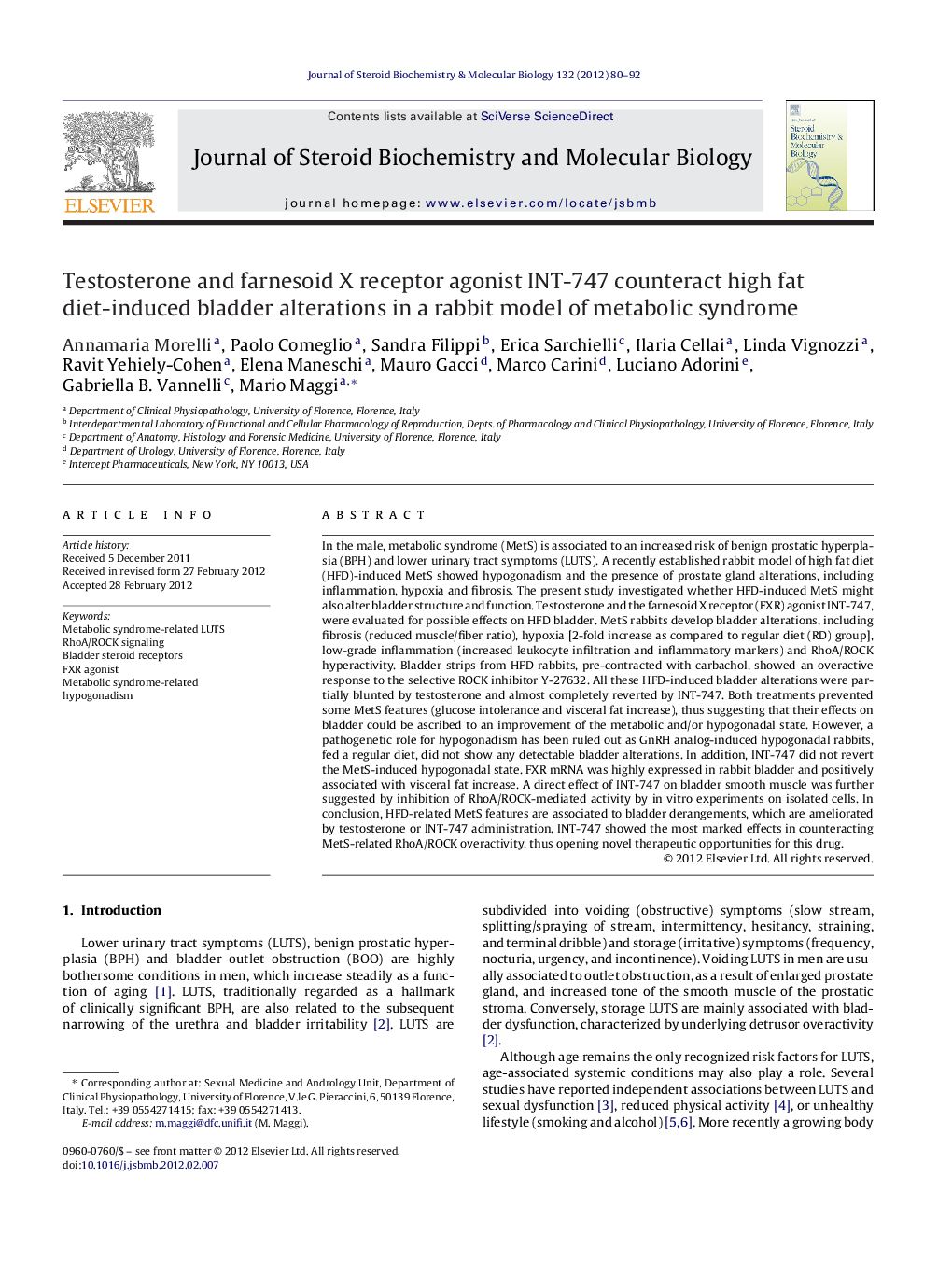| Article ID | Journal | Published Year | Pages | File Type |
|---|---|---|---|---|
| 1991584 | The Journal of Steroid Biochemistry and Molecular Biology | 2012 | 13 Pages |
In the male, metabolic syndrome (MetS) is associated to an increased risk of benign prostatic hyperplasia (BPH) and lower urinary tract symptoms (LUTS). A recently established rabbit model of high fat diet (HFD)-induced MetS showed hypogonadism and the presence of prostate gland alterations, including inflammation, hypoxia and fibrosis. The present study investigated whether HFD-induced MetS might also alter bladder structure and function. Testosterone and the farnesoid X receptor (FXR) agonist INT-747, were evaluated for possible effects on HFD bladder. MetS rabbits develop bladder alterations, including fibrosis (reduced muscle/fiber ratio), hypoxia [2-fold increase as compared to regular diet (RD) group], low-grade inflammation (increased leukocyte infiltration and inflammatory markers) and RhoA/ROCK hyperactivity. Bladder strips from HFD rabbits, pre-contracted with carbachol, showed an overactive response to the selective ROCK inhibitor Y-27632. All these HFD-induced bladder alterations were partially blunted by testosterone and almost completely reverted by INT-747. Both treatments prevented some MetS features (glucose intolerance and visceral fat increase), thus suggesting that their effects on bladder could be ascribed to an improvement of the metabolic and/or hypogonadal state. However, a pathogenetic role for hypogonadism has been ruled out as GnRH analog-induced hypogonadal rabbits, fed a regular diet, did not show any detectable bladder alterations. In addition, INT-747 did not revert the MetS-induced hypogonadal state. FXR mRNA was highly expressed in rabbit bladder and positively associated with visceral fat increase. A direct effect of INT-747 on bladder smooth muscle was further suggested by inhibition of RhoA/ROCK-mediated activity by in vitro experiments on isolated cells. In conclusion, HFD-related MetS features are associated to bladder derangements, which are ameliorated by testosterone or INT-747 administration. INT-747 showed the most marked effects in counteracting MetS-related RhoA/ROCK overactivity, thus opening novel therapeutic opportunities for this drug.
► HFD-induced MetS determines bladder hypoxia, low-grade inflammation and fibrosis. ► T supplementation counteracts some HFD-induced metabolic and bladder derangements. ► FXR is highly expressed in the bladder and correlates with visceral fat increase. ► The FXR agonist INT-747 prevents HFD-induced hyperglycemia and visceral fat increase. ► INT-747 markedly inhibits bladder RhoA/ROCK signaling, both in vitro and in vivo.
